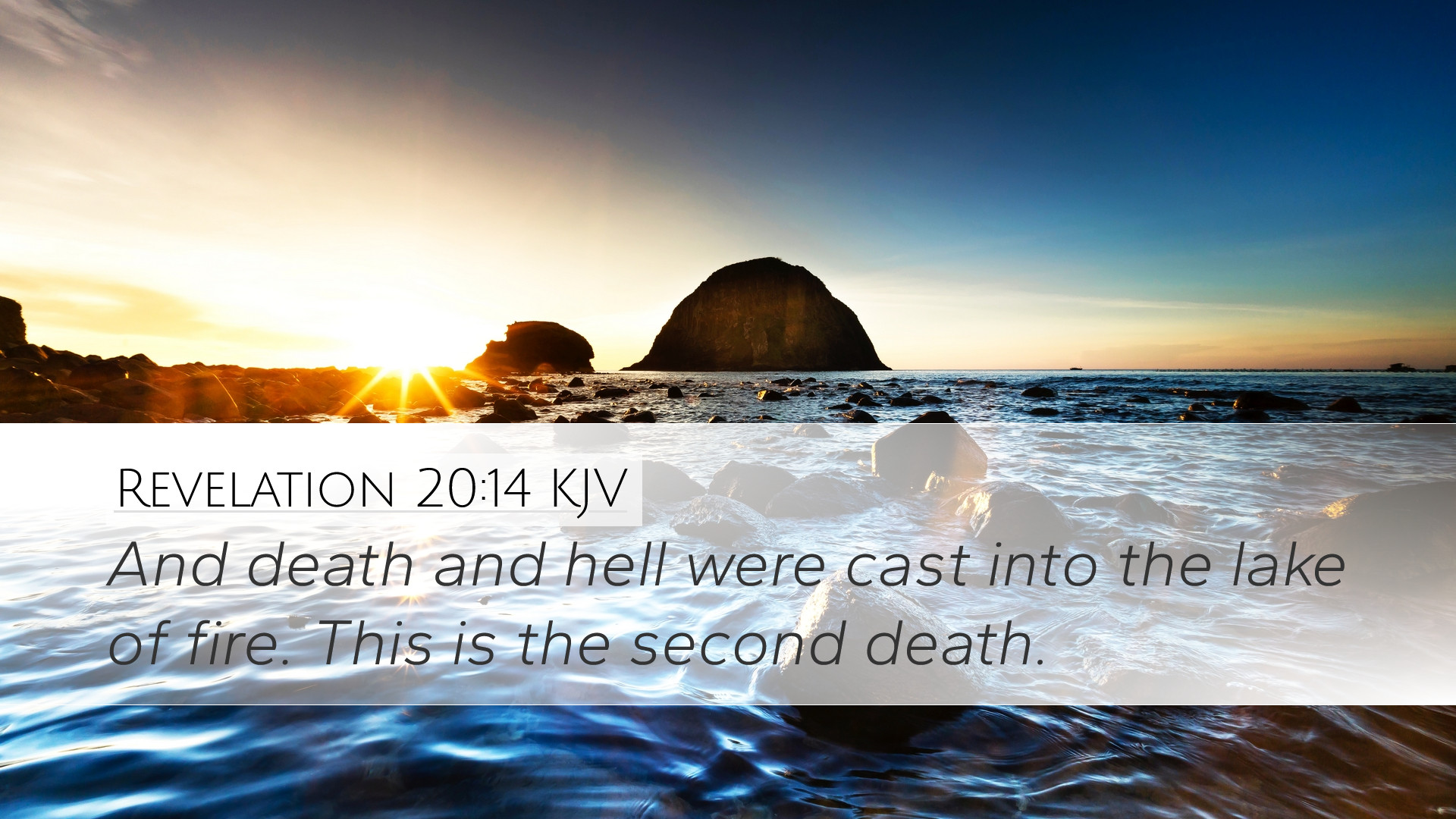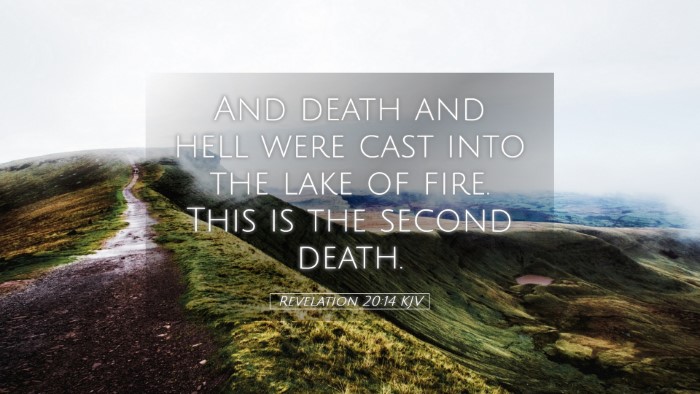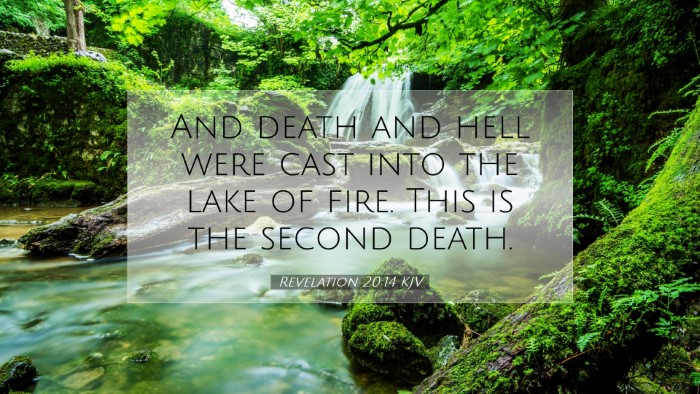Commentary on Revelation 20:14
Revelation 20:14 states, "Then death and Hades were thrown into the lake of fire. This is the second death, the lake of fire." This verse signifies the ultimate culmination of God's judgment on evil, death, and separation from divine fellowship.
Overview
The message of this scripture is a profound declaration of the final fate of both death and Hades. In theological terms, it serves as a conclusion to the cosmic battle between good and evil as presented throughout the entire book of Revelation.
Theological Implications
-
Death and Hades: According to Matthew Henry, death represents the culmination of human mortality, while Hades signifies the abode of the deceased. The casting of these entities into the lake of fire exemplifies the total eradication of death's power over mankind, heralding a new era of life eternal.
-
The Lake of Fire: Albert Barnes interprets the lake of fire as a place of eternal punishment, denoting ultimate separation from God. This emphasizes the serious consequences of spiritual disobedience and serves as both a warning and a call to repentance for humanity.
-
The Second Death: Adam Clarke highlights the term "second death," which refers to the final and irreversible state of separation from God. This emphasizes that not all deaths are equal, and there exists a fate worse than the physical demise itself—a fate of eternal damnation for the unrepentant.
Historical Context
Understanding the historical context of Revelation is essential. Written during a time of great persecution for early Christians, the book offers hope and consolation. The promise that death and Hades would ultimately be defeated reassures believers of God's sovereignty over all circumstances.
Symbolism in the Passage
-
Imagery of Judgment: The lake of fire symbolizes God's final judgment and serves as a motivation for righteous living. Matthew Henry emphasizes that this vivid imagery is meant to instill a sense of fear that leads to holiness.
-
Ultimate Restoration: While the verse speaks of judgment, it also implies that the new heaven and new earth (which precede this event) re-establish God’s original design for creation, free from sin and death.
Practical Applications
The implications of Revelation 20:14 for contemporary believers are profound. Pastors, theologians, and disciples of Christ are encouraged to emphasize God's justice and mercy in their teachings. This reinforces the necessity of salvation and the urgency of evangelism.
-
Encouragement for the Faithful: The faithful are reminded of their victory in Christ over all powers of darkness, including death itself. Clarke notes the assurance believers have in their eternal life through Jesus.
-
Call to Holiness: For believers, this revelation should embolden them to live lives that honor God, proving their salvation through obedience and love.
-
A Warning to the Unrepentant: The severe nature of the second death is a sobering reminder of the fate awaiting those who reject Christ. It serves as an impetus for evangelistic efforts, providing a sense of urgency in sharing the Gospel.
Conclusion
Revelation 20:14 encapsulates the ultimate triumph of God over death and evil. This text serves not only as a closure to the narrative of judgment but also as an invitation to all individuals to align their lives with the teachings of Christ. Through the insights provided by esteemed commentators, we find both reassurance and motivation to pursue holiness and proclaim the Gospel. In the end, the message is clear: there is light beyond the lake of fire, and that light is found in the grace of our Lord Jesus Christ.


